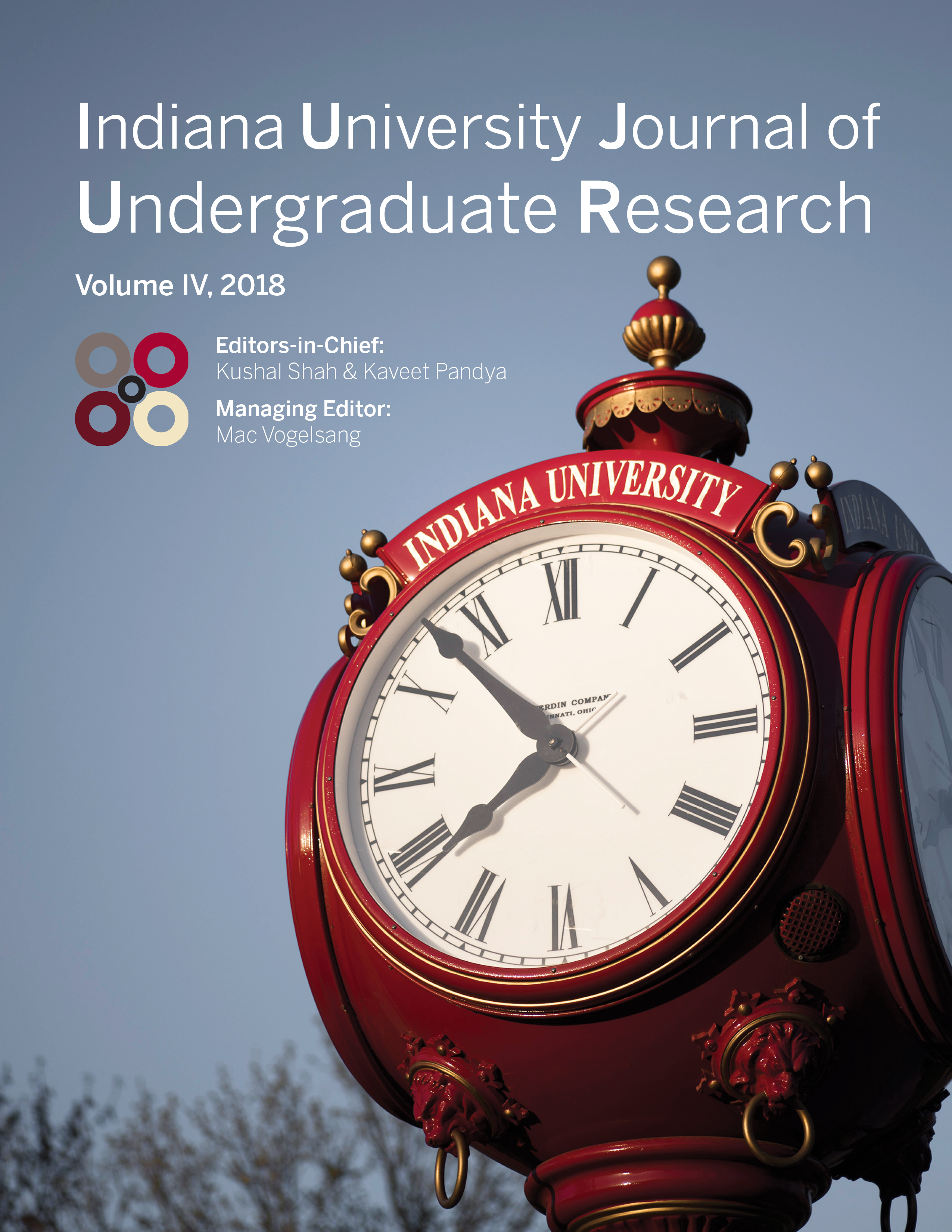Increasing Awareness of Substance Abuse and Addictions: Does Early Childhood Drug Education Provide Diversion from Using Drugs and/or Alcohol?
Main Article Content
Abstract
According to the National Institute on Drug Abuse, 70 percent of adolescents have experimented with alcohol, while 20 percent have experimented with prescription drugs before their senior year in high school. Alcohol and drug abuse has become a nationwide problem. A small rural community in southern Indiana reports that almost 12 percent of its population uses drugs daily. The authors hypothesize that current school-based alcohol and drug curriculums are not robust enough to divert risky behavior during adolescence. Surveys were administered to residents living in two separate transitional homes for people with addiction. The surveys consisted of questions regarding drug and alcohol abuse related to childhood education. The process was completed using a descriptive study. Participants in the study (n = 17) revealed valuable information confirming their rationales for substance abuse. Overwhelmingly, all participants agreed that drug education needs to be available in early childhood education. As substance abuse escalates, so must our efforts to research and understand the problem. The examination of current adolescent drug and alcohol prevention programs is
essential to help promote program evaluation and in identifying potential education needs for our youth.
Downloads
Article Details
Authors who publish with this journal agree to the following terms:
- Ownership of the copyright shall remain with the Author, subject to IUJUR’s use and the rights granted by the Creative Commons license assigned by the Author. A Creative Commons Attribution-NonCommercial 4.0 International (CC BY-NC 4.0) license will be applied to the published work unless otherwise indicated in the Student Author Contract. The CC BY-NC 4.0 license (https://creativecommons.org/licenses/by-nc/4.0/) lets others remix, tweak, and build upon the published Work non-commercially, and although the new works must also acknowledge the original IUJUR publication and be noncommercial, they don’t have to license their derivative works on the same terms.Authors are able to enter into separate, additional contractual arrangements for the non-exclusive distribution of the journal's published version of the work (e.g., post it to an institutional repository or publish it in a book), with an acknowledgement of its initial publication in this journal.
- Authors are permitted and encouraged to post their work online (e.g., in institutional repositories or on their website) prior to and during the submission process, as it can lead to productive exchanges, as well as earlier and greater citation of published work (See The Effect of Open Access).
References
Bruckner, T., Domina, T., Hwang, J., Gerlinger, J., Carpenter, C., & Wakefield, S. (2014). State-level education standards for substance use prevention programs in schools: A systematic content analysis. Journal of Adolescent Health, 54(4), 467–473. doi:10.1016/j.jadohealth.2013.07.020.
Centers for Disease Control and Prevention. (2017). Adolescent and school health: Health education curriculum analysis tool (HECAT). Retrieved from https://www.cdc.gov/healthyyouth/hecat
Freeman, J. (2014). Motivational curriculum development for youth at risk: Health care provider alcohol and drug guided education in inner city public high schools. Journal of Alcohol and Drug Education, 58(1), 7–16.
Giannotta, F., Vigna-Taglianti, F., Galanti, M., Scatigna, M., & Faggiano, F. (2014). Short-term mediating factors of a school-based intervention to prevent youth substance use in Europe. Journal of Adolescent Health, 54(5), 565–573. doi:org/10.1016/j.jadohealth.2013.10.009
Grabus, S. (2016). Sensation seeking promotes initiation, impulsivity promotes escalation of substance use. Advancing Addiction Science: National Institute on Drug Abuse. Retrieved from https://www.drugabuse.gov/news-events/nida-notes/2016/05/sensation-seeking-promotes-initiation-impulsivity-promotes-escalation-substance-use
Guo, L., Xu, Y., Deng, J., Huang, J., Huang, G., Gao, X., ... Lu, C. (2016). Association between nonmedical use of prescription drugs and suicidal behavior among adolescents, JAMA Pediatrics, 170(10), 971–978. doi:10.1001/jamapediatrics.2016.1802
Huang, Y., Ho, C., Lee, S., Gee, M., Lan, S., & Hsieh, Y. (2015). Intent to abuse addictive substances in regions with serious drug abuse among early adolescents. Journal of Substance Use, 20(6), 417–423. doi:10.3109/14659891.2014.942399
Indiana State Department of Health. (2017). Opioid overdose deaths [Excel spreadsheet]. Retrieved from http://www.in.gov/isdh/files/Table%203%20Drug%20overdose% 20deaths% 20involving%20any%20opioid%20by%20year%202010-2015.xlsx
Kenning, C. (2015). In HIV-riddled town, addiction ‘the lifestyle’. Courier Journal. Retrieved from http://www.courier-journal.com/story/news/local/2015/04/27/hiv-riddled-town addiction-lifestyle/26482399/
Little, M., Pokhrel, P., Sussman, S., & Rohrbach, L. (2015). The process of adoption of evidence-based tobacco use prevention programs in California schools. Prevention Science: The Official Journal of the Society for Prevention Research, 16(1), 80–89. doi:.org/10.1007/s11121-013-0457-8
MacArthur, G., Harrison, S., Caldwell, D., Hickman, M., & Campbell, R. (2015). Peer ledinterventions to prevent tobacco, alcohol and/or drugs use among young people aged 11-21 years’ a systematic review and meta- analysis. Society for the Study of Addiction, 111, 391–407. doi:10.1111/add.13224
National Institute on Drug Abuse. (2014). Principles of adolescents substance use disorder treatment: A research based guide. Retrieved from https://www.drugabuse.gov/ publications/principles-adolescent-substance-use-disorder-treatment-research-based-guide/introduction
Pecoraro, A., Horton, T., Ewen, E., Becher, J., Wright, P. A., Silverman, B., ...Woody, G. E. (2012). Early data from Project Engage: A program to identify and transition medically hospitalized patients into addictions treatment. Addiction Science & Clinical Practice, 720. doi:10.1186/1940-0640-7-20
Rudd, R., Aleshire, N., Zibbell, J., & Gladden, M. (2016). Increases in drug and opioid overdose deaths-United States, 2000–2014. Centers for Disease Control and Prevention, 64(50) 1378–1382. Retrieved from https://www.cdc.gov/mmwr/preview/mmwrhtml/ mm6450a3.htm
Rudowitz, R. (2017). Medicaid: What we learned from the recent debate and what to watch for in September 2017. Kaiser Family Foundation. Retrieved from https://www.kff.org/medicaid/issue-brief/medicaid-what-we-learned-from-the-recent-debate-and-what-to-watch-for-in-september-2017/
Sanchez, Z., Sanudo, A., Andreoni, S., Schneider, D., Pereira, A., & Faggiano, F. (2016). Efficacy evaluation of the school program Unplugged for drug use prevention among Brazilian adolescents. BMC Public Health, 16(1206), 1–9. doi:10.1186/s12889-016-3877-
Tobacco Prevention and Cessation Commission. (2017). Tobacco, substance use, and behavioral health disorders. Retrieved from https://www.in.gov/isdh/tpc/files/Substance%20Use%20 and%20BH%20Disorders_04%2004%202017.pdf
Wade-Mdivanian, R., Anderson-Butcher, D., Newman, T., & Ruderman, D. (2016). Exploring the long-term impact of a positive youth developmental-based alcohol, tobacco and other drug prevention program. Journal of Alcohol and Drug Education, 60(3), 67–90.
Zimlich, R. (2016). How to fill gaps in sexual health education. Contemporary OB/GYN, 61(5), 35–37.

